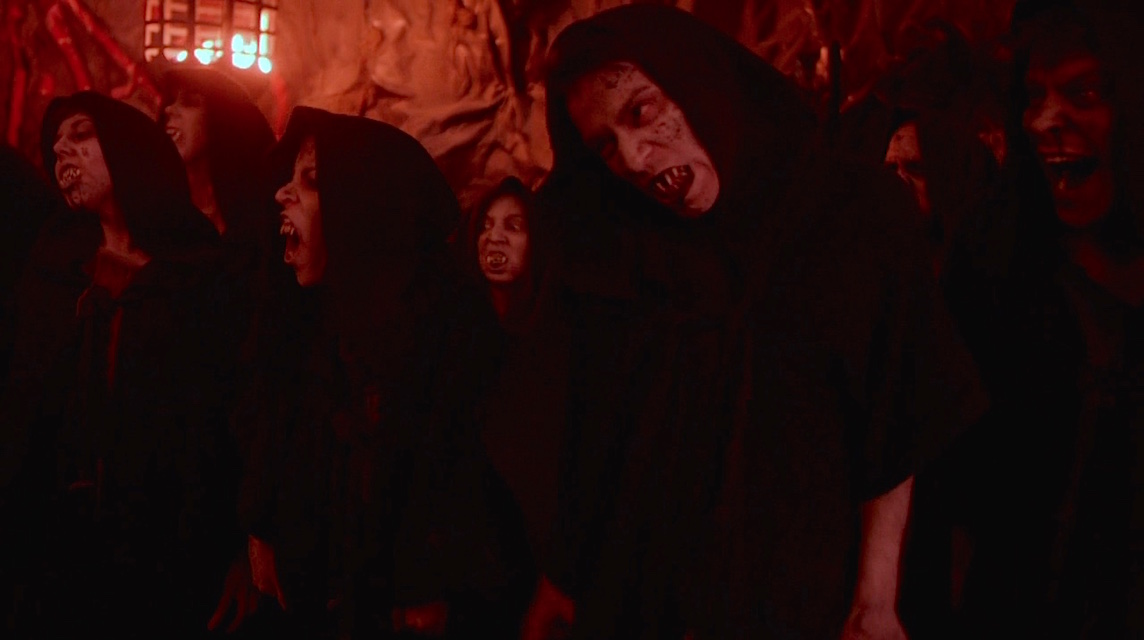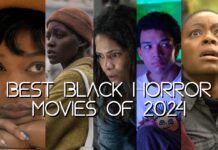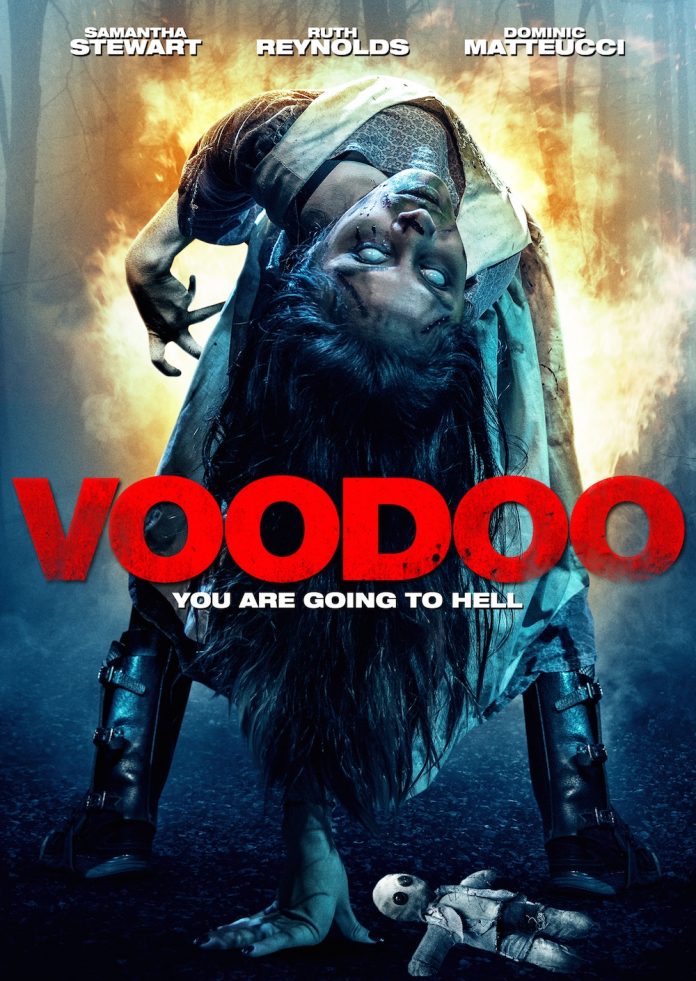I tend to eye any movie about voodoo that has nary a person of color in it suspiciously. Has voodoo become gentrified now? Are white people conjuring Baron Samedi in between their twerking sessions and “This Is America” parody videos?
Coming across the title VooDoo, I had two immediate thoughts. One: I’ll give this film a shot, because there’s gotta be some black folks in it. Two: why the hell is the “D” capitalized? Does it stand for something? Like “dumpster fire”?
It turns out VooDoo is one of those virtually all-white voodoo flicks, which is odd considering the official synopsis: “When Dani, a seemingly innocent southern belle, vacations to LA to evade her increasingly complicated life, she’s brought face to face with the evil voodoo priestess Serafine who curses her to experience the horrors of her past in Satan’s Hell.”
“Evil voodoo priestess” Serafine (Constance Strickland) is, in fact, a black woman, and despite being the primary antagonist, she has maybe two minutes of screen time in the entire film. Thus, not only is she presented as a one-dimensional, inherently wicked voodoo villain straight out the 1930s playbook of black horror roles, but she’s also practically erased from the film altogether — straight out of the 1950s playbook of black horror roles.
She appears in the opening scenes, in which she kidnaps and kills a white child as a sacrifice, uttering inhuman growls and gibberish that’s supposed to sound like a voodoo spell. After popping up for literally three seconds in the middle of the film, only near the end does she reappear briefly as a cohort of Satan. Because voodoo and Satanism are the same, right? Should I verify that on Wikipedia? Nah, I’m pretty sure that’s accurate.
We come to find out Serafine’s spell is a vengeful curse aimed at the aforementioned “innocent southern belle,” Dani (Samantha Stewart, whose accent seems to aim for Cajun but ends up sounding more like Foghorn Leghorn), because she slept with Serafine’s husband. What makes this man-stealing gal, who’s had an abortion and has no qualms about drinking booze, smoking and taking drugs, so “innocent,” you ask? Well, she’s young, pretty and white. Isn’t that enough?
The first part of the movie — which is pointlessly (and inconsistently) shot in a first-person “found footage” style — shows Dani experiencing paranormal activity during her sightseeing visit to her cousin in L.A., building up to [MINOR SPOILER ALERT] her literal descent into Hell in the final portion, which is basically her walking through a Halloween haunted house attraction FOR 30 GODDAMN MINUTES. We just follow her from one scene of torture to another…and another..and another…and another. To the film’s credit, watching this does indeed make viewers feel like they’re in Hell. An endless Hell of lazy, low-budget filmmaking. (Satan, by the way, is apparently the lead singer for G.W.A.R.)
We never get to see Serafine’s side, because writer-director Tom Costabile isn’t interested in seeing her as a person; she’s just a force of nature that propels the story, a tool for the white protagonist’s torment — sort of like those dramas that focus on the tribulations a white lawyer has to go through while defending an accused black person rather than the tribulations the black person whose life is actually on the line has to go through. Even though she’s been wronged, I hesitate to even call her a “woman scorned” because she’s not treated as a woman. When she’s not snarling and gyrating like a beast who thinks nothing of child murder, she pops up as a demonic entity with a hotline to the Prince of Darkness.
I don’t want to take out decades of frustration on one movie’s continuation of the industry’s status quo for racial representation, but dammit, VooDoo, you make it too easy to hate you. The mediocre acting, the numbingly dull dialogue, the unlikable characters and the literal demonization of an entire religion are bad enough, but Serafine pushed me over the edge. She’s emblematic of how Hollywood has portrayed black characters in general — and black women in particular — since the dawn of the film era. Their value is clear in their wafer-thin characterizations. Serafine is the angry black woman, the evil voodoo practitioner, the magical Negro, anything but a three-dimensional human being.
(Incidentally, one other black woman [Lavelle Roby], referred to only as “Venice Gypsy,” appears for a minute, serving as both a “magical Negro” and a “voice of reason.”)
Of course, not all cinematic villains have to be complex, multi-faceted individuals, but wouldn’t it be more fulfilling artistically to carve some depth into a character instead of gratuitously padding out the finale with a carny act?
Frankly, the entirety of VooDoo is a buildup for the Hell scenes, which desperately want to shock but present little that jaded horror fans haven’t seen before, and since they come off like Halloween haunted house theater, can’t be taken seriously anyway. There’s only one scare in the entire film that works; fast-forward to the 26:00 mark, watch it for five seconds and then turn it off. That way, you can avoid the final 30 minutes of literal and figurative torture.

























Shy was just walking in a horror
Festival atraktion what they call hell the effects are so bad